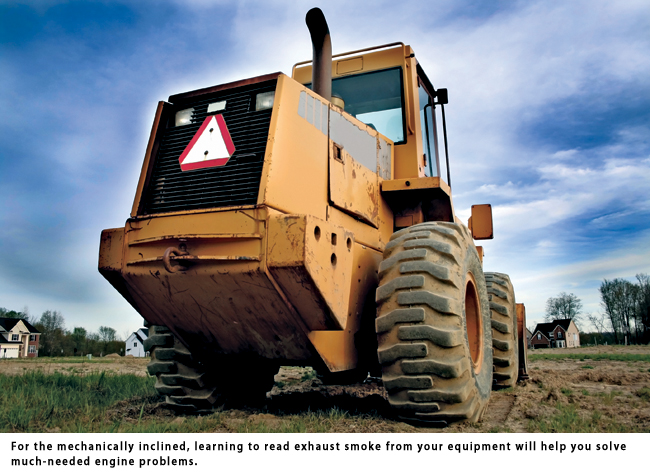Smoke Signals
Learning to read exhaust smoke from your equipment can sometimes feel like deciphering Morse code, but it can be a very valuable skill for anyone responsible for maintaining diesel engines. Smoke is nearly always a sign of improper or incomplete combustion of the air/fuel mixture in the cylinder, but that simple statement covers a multitude of different conditions. Fortunately, the nature of the smoke provides a good insight into the conditions that cause it, if one knows how to read it. A malfunctioning diesel will generally produce one of three different kinds of smoke:
- Black or dark-gray smoke, typically caused by partially burned fuel, most often due to low combustion pressure or temperature. This is why diesels commonly smoke on startup.
- White or grayish-white smoke, most commonly caused by unburned fuel, lube oil leaking past the piston rings or coolant leaking into the cylinder. In the first two cases, the smoke persists and smells oily, while coolant steam dissipates quickly and has little or no smell.
- Blue or blue-gray smoke, almost always caused by lube oil being burned in the cylinder.
The diagnostic process begins with observing the type of smoke produced plus the load conditions and point in the operating cycle at which it is produced. Here are the most common smoke-related symptoms and the most likely causes for each.
While it obviously isn’t the only tool needed to keep your diesels running at top efficiency, understanding what the smoke coming from your exhaust pipe means can give you a head-start on diagnosing engine health and preventing future problems. It’s a skill worth learning.
David Smith is engineering manager for Perkins Engines Co. Ltd., based in Peterborough, England.





Comments are closed here.